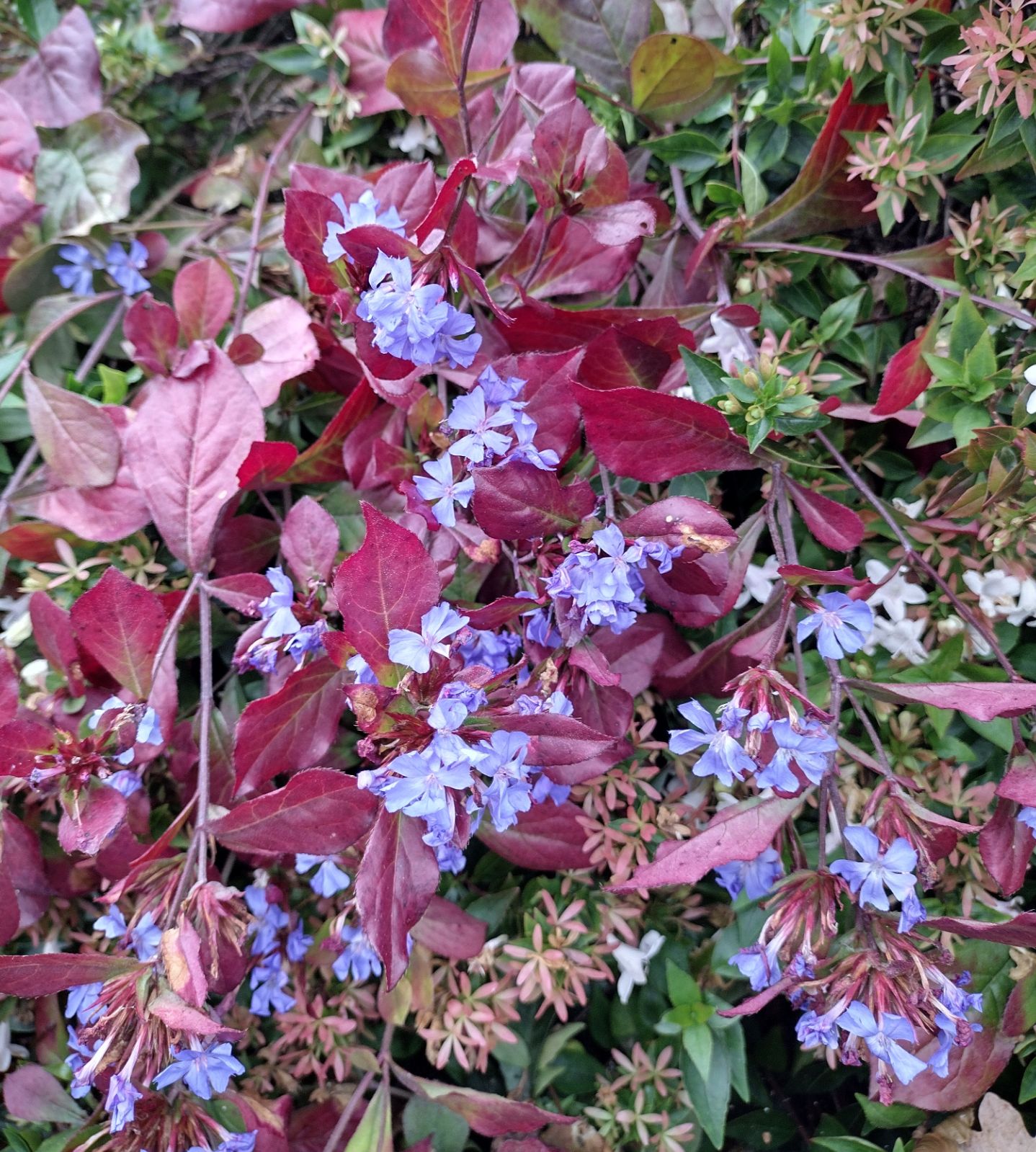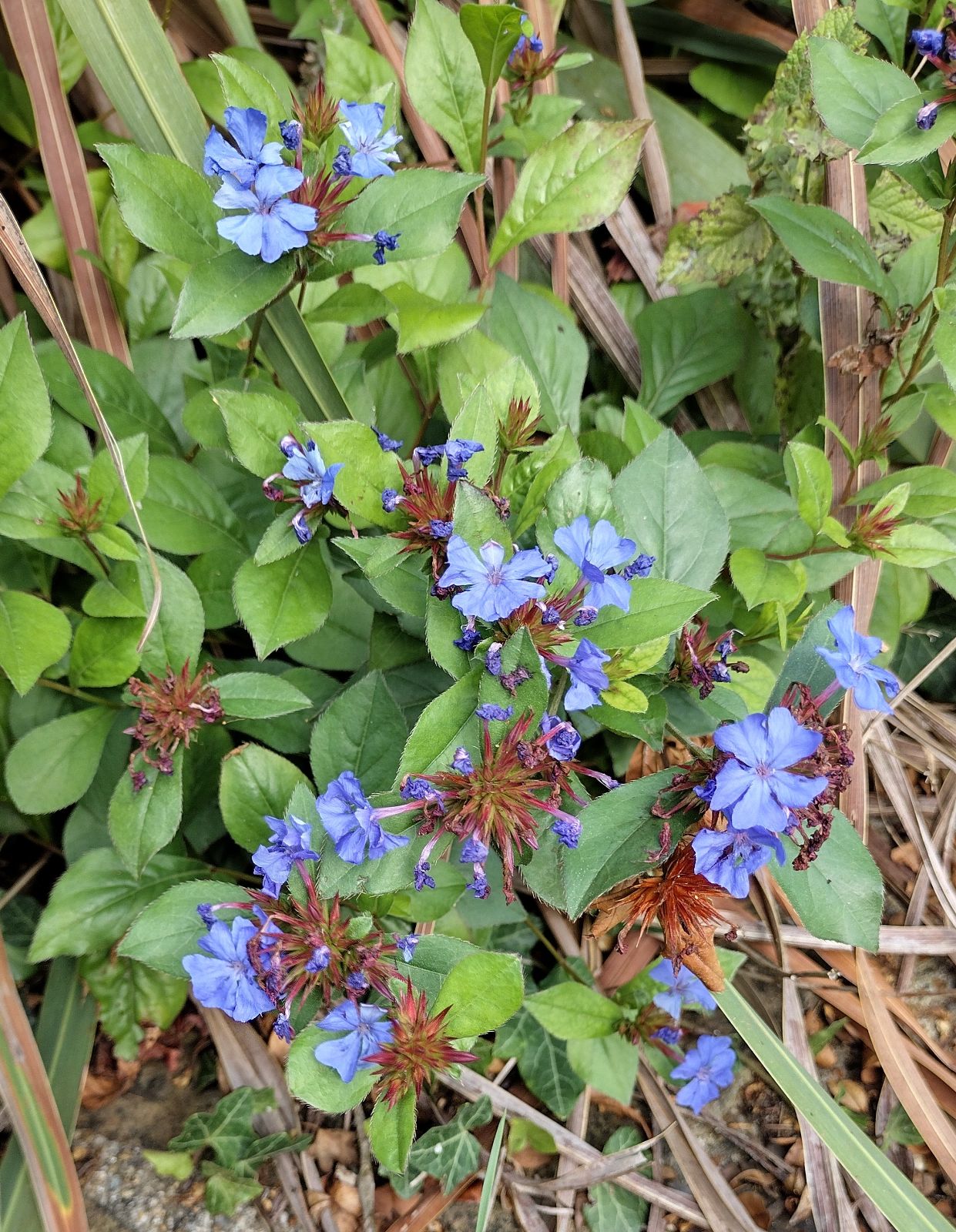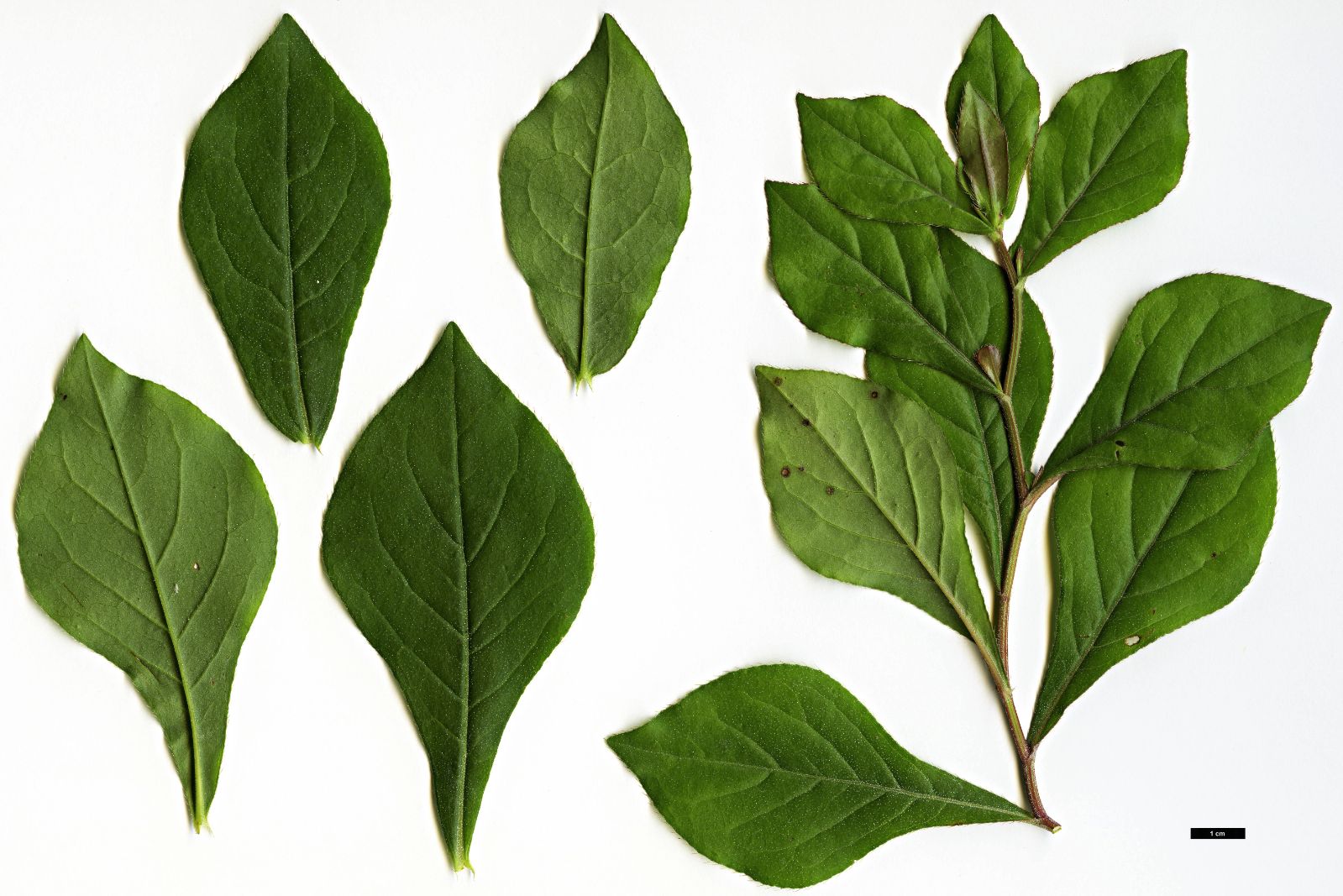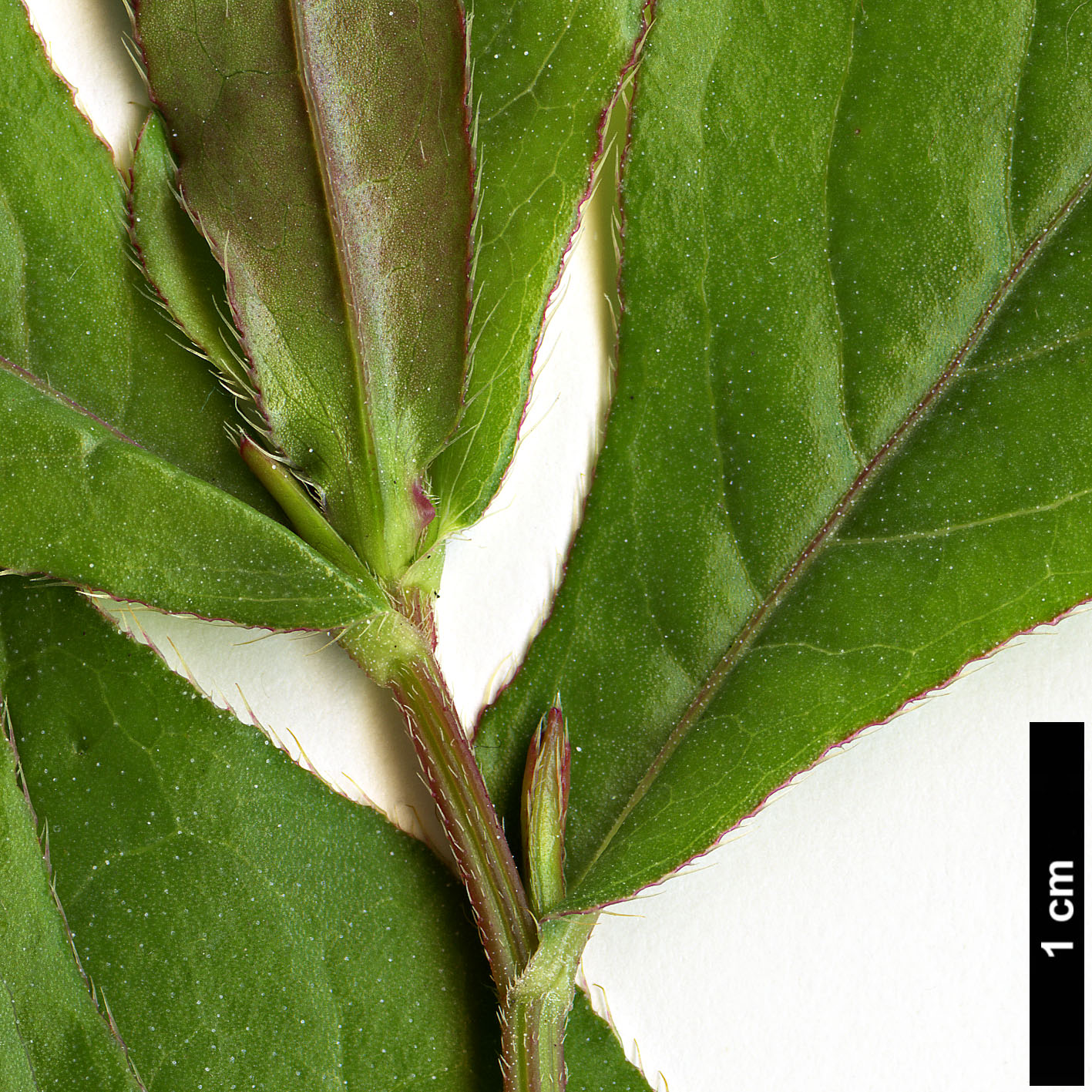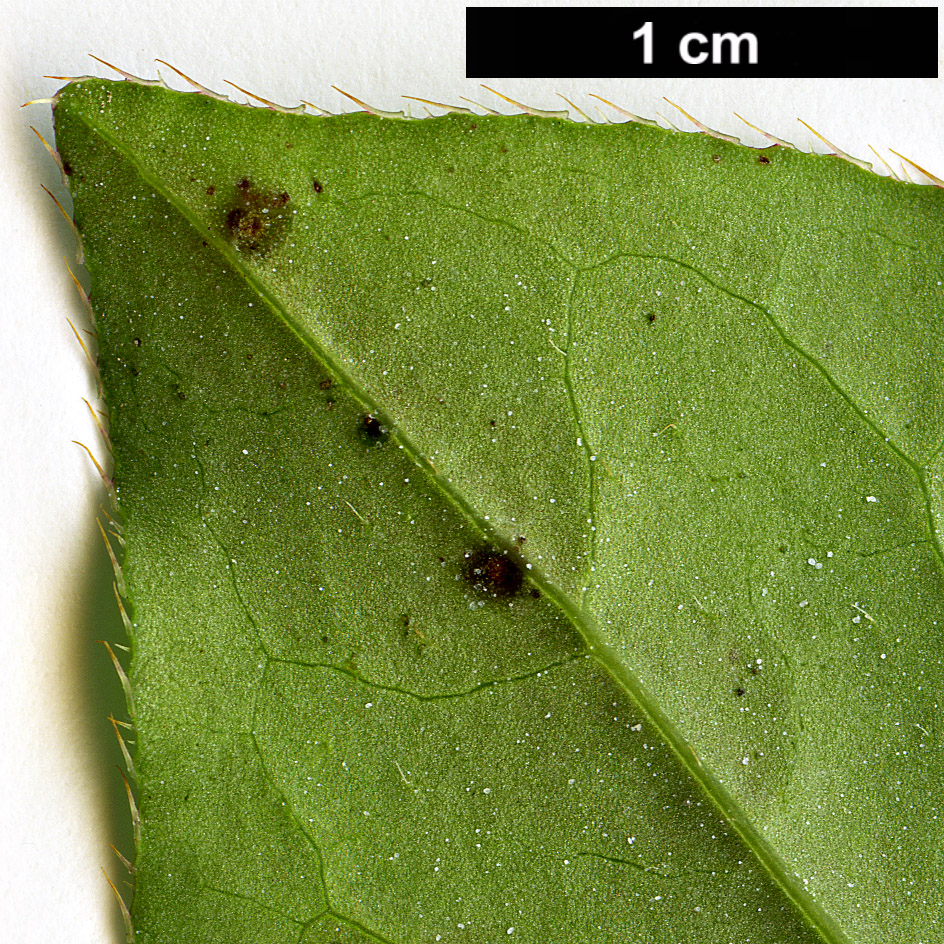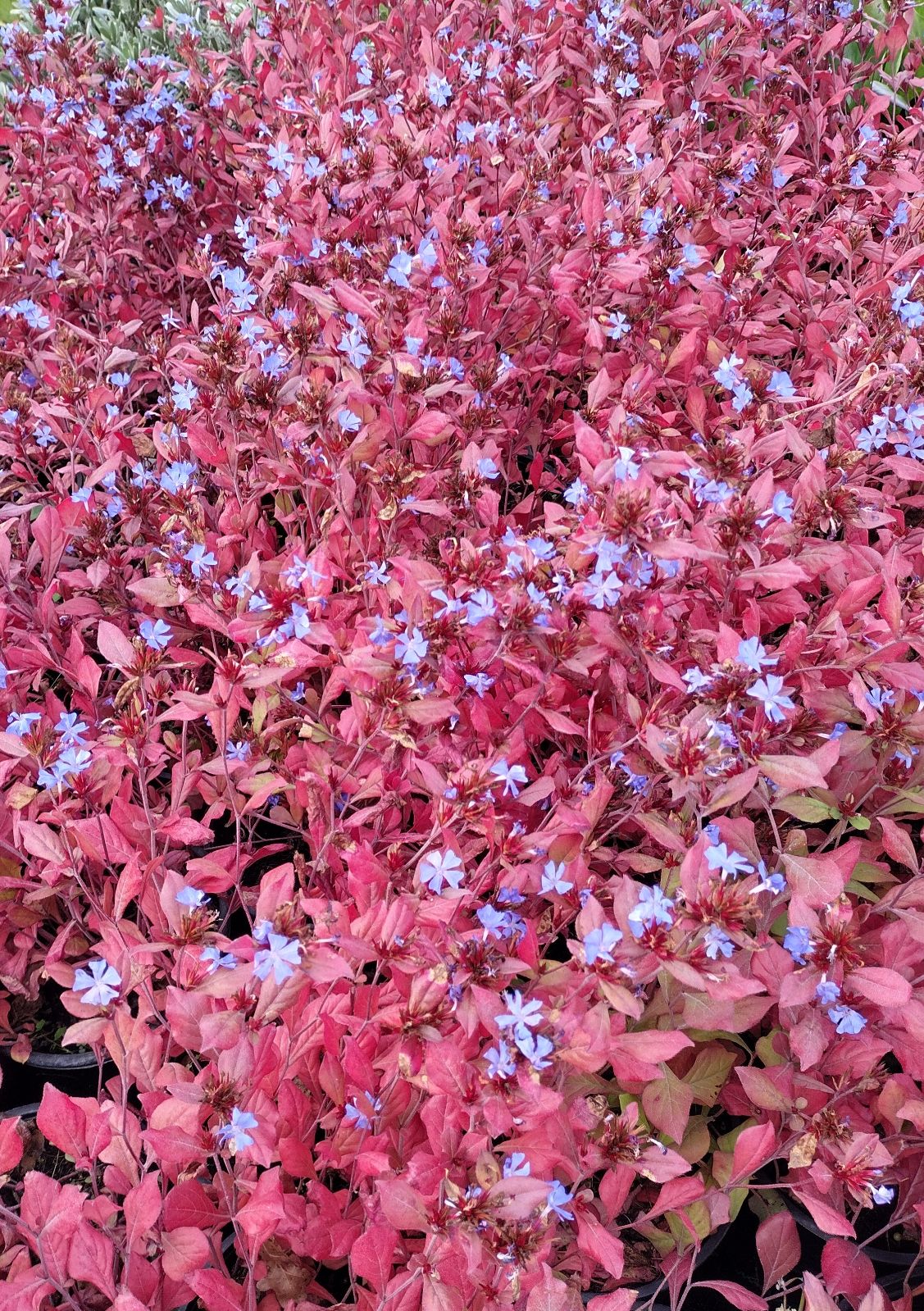Ceratostigma plumbaginoides
Sponsor
Kindly sponsored by
a member of the International Dendrology Society
Credits
Julian Sutton (2021)
Recommended citation
Sutton, J. (2021), 'Ceratostigma plumbaginoides' from the website Trees and Shrubs Online (treesandshrubsonline.
Genus
Common Names
- Lady Larpent's Leadwort
- Lady Larpent's Plumbago
Synonyms
- Plumbago larpentae Lindl.
- Valoradia plumbaginoides (Bunge) Boiss.
Perennial with deciduous, herbaceous aerial stems from woody, rhizomatous stems, to about 30 cm. Stems slender, simple or branched, without bud scales. Leaf blade broadly ovate to obovate, 4–6 × 2–3 cm, both surfaces more or less glabrous; base attenuate or abruptly constricted before becoming attenuate, apex shortly acuminate to obtuse. Inflorescences terminal or axillary, usually with 15–30 flowers; each flower subtended by a lanceolate to oblong bract; bracteoles ovate with acute, apiculate apex. Calyx 13–15 × 1.5–2 mm, with short, sparse adpressed hairs on the ribs, lobes ~2 mm. Corolla 2.5–2.8 cm, tube red-purple; lobes blue, obdeltate, about 8 × 8 mm, apex notched and mucronate. Stamens slightly exserted. Heterostylous: short-styled form with style included; long-styled form with style extending beyond anthers. Summer-autumn flowering, June-September in the wild. (Peng & Kamelin 1996; Cullen et al. 2011).
Distribution China Beijing Shi, Henan, Jiangsu, Shanxi, Zhejiang
Habitat Rocky places, often in foothills.
USDA Hardiness Zone 5-9
RHS Hardiness Rating H5
Awards AGM
Conservation status Not evaluated (NE)
Of all the ceratostigmas grown in gardens, this is the hardiest, the least woody, the lowest growing, and the most freely spreading. Until the turn of the 20th century it was the only Asiatic species cultivated in our area, its introduction making a quick impact on British gardens. Just as Graham Thomas in his classic Perennial Garden Plants (1976) justified including shrubby Ceratostigma species since they are often cut to the ground in winter, so we include this essentially herbaceous plant with the more woody species: in horticultural terms they have a great deal in common. Apart from its strongly rhizomatous, herbaceous habit, it is distinguished from the others by its leaves being hairless, apart from the margins, and usually larger.
Growing around the eastern Chinese cities of Beijing and Shanghai, C. plumbaginoides came early to the attention of European botanists and gardeners. It was described and named by Alexander von Bunge (1833), from a specimen he collected near Beijing. Robert Fortune knew of it in Shanghai, where it grew in the stonework of buildings, but failed successfully to introduce it (Lindley 1847). It was established in Europe from plants collected in Shanghai, sent from Canton (now Guangzhou) in 1846 to the British businessman Sir George Larpent, who was much involved in trade with Asia. First flowering that year in the Larpents’ Roehampton, Surrey, garden, it was exhibited that autumn as a single plant with just three flowers. It was named Plumbago larpentae by Lindley (1847) in ignorance of Bunge’s name, honouring Lady Larpent, a noted plantswoman. This novelty was propagated, initially by cuttings, at what must have been a quite extraordinary rate. Lindley (1847) reported 4000 flowers on plants at Knight & Perry’s Chelsea nursery in October of that year. By 1850 it was ‘very common in the gardens of this country’ (J. Smith in Hooker 1850). It seems entirely possible that this single clone is still dominant in gardens today.
It was at first considered only borderline hardy, apparently being used for summer bedding, started under glass (Smith in Hooker 1850). With a few decades of collective garden experience, Robinson (1898) was able to describe it as ‘perfectly hardy’ and noted that propagation was by that time usually by division of the rhizomatous rootstock in winter or early spring, as it is today. It is certainly growable in parts of central Europe and the central United States; in St Louis, MO, a light mulch is advisable in cold winters (Missouri Botanical Garden 2021). A long, warm growing season is certainly an advantage (Bean 1976), allowing maximum growth by flowering time, when the ageing leaves may turn more decisively red than in other species, making an attractive contrast with the flowers. In areas with hot summers, it benefits from some afternoon shade (Missouri Botanical Garden 2021).
Drought tolerant, rhizomatous, and with rather short aerial stems, C. plumbaginoides is able to run through and compete with other lower growing plants. Hocking (2018) illustrates it growing intermingled with a yellow-variegated form of the low, densely clumping grass Hakonechloa macra, a lovely contrast of both colours and textures; she also describes planting it around small purple-leaved Berberis.
C. plumbaginoides is a heterostylous species (Peng & Kamelin 1996), but this seems not to have been investigated thoroughly.
Although mainly grown as an ornamental, there is a hint in the literature (Andreeva & Ul’yanov 1980) that it may have been cultivated in the Soviet Union, perhaps Crimea, to produce plumbagin as a wine stabilizer. Plumbagin(e) is a toxic, pharmacologically active quinoid usually extracted from Plumbago indica but found more widely (Sigma-Aldrich 2021).

